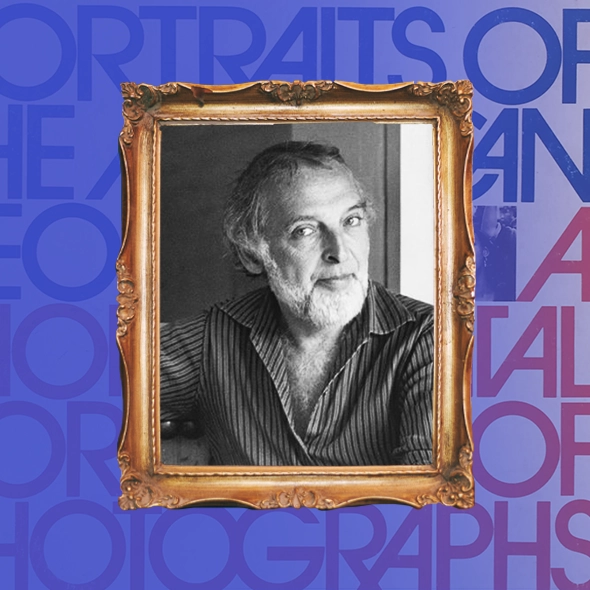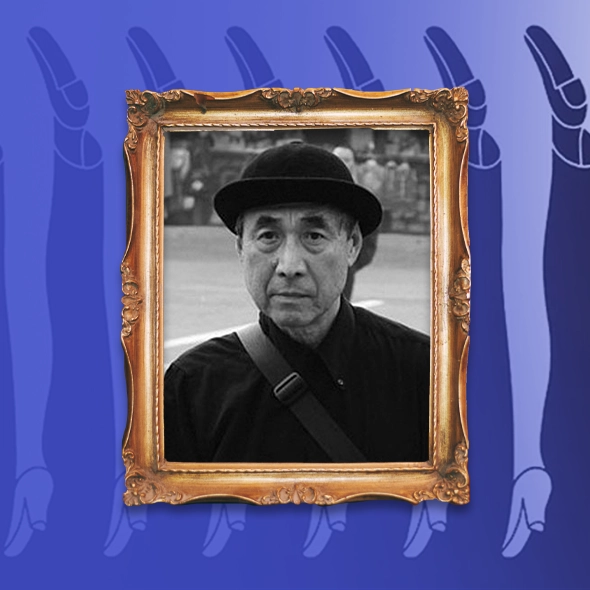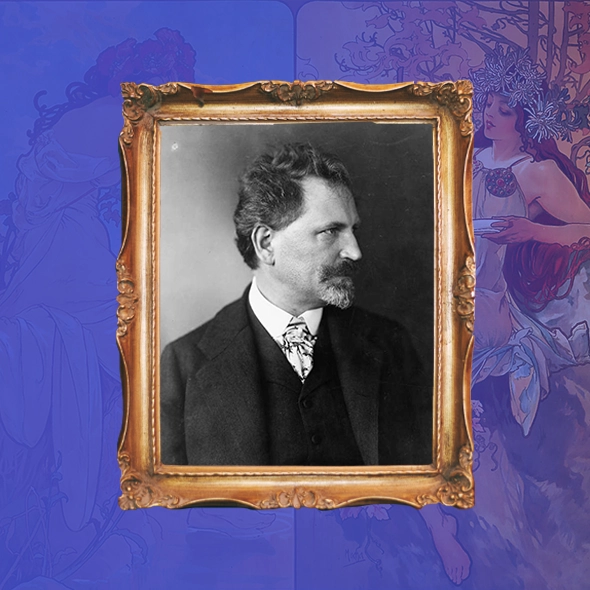Alexander Rodchenko: Graphic Designers You Should Know About
Alexander Rodchenko, Russian Constructivist and graphic design pioneer, whose radical photomontage, bold typography, and functional design reshaped modern visual culture

Alexander Rodchenko (1891–1956) was more than a designer. He helped build an entirely new visual language for a society in flux. As one of the founders of Constructivism, he brought radical ideas like photomontage, geometric structure, and stripped-down typography into Soviet visual culture. His work pushed the boundaries of what design could be, even as the state pushed back. In Stalin’s Russia, Rodchenko was condemned for choosing aesthetics over propaganda. Yet his vision reshaped graphic design far beyond the borders of the USSR.
Fast Facts
Date of Birth
March 17, 1918
Place of Birth
New York City, USA
Education
Cooper Union, New York
Known For
Turning typography into expressive visual storytelling; Editorial Design
Big Break
Co-founding Constructivism and designing for state publishers like Gosizdat
Design Philosophy
Art should serve the collective and be integrated into everyday life
Style Keywords
Geometric. Functional. Bold. Experimental. Political.
Era
Russian avant-garde, Constructivism, early Soviet period
Affiliations
VKhUTEMAS, LEF magazine, Vladimir Mayakovski, Gosizdat
Died
December 3, 1956 – Moscow, USSR
Origins
Alexander Rodchenko was born on December 5, 1891, in St. Petersburg, into a working-class family. His father is said to have worked as a theater prop maker, and his mother as a laundress. After the family moved to Kazan, Rodchenko enrolled at the Kazan School of Art, where he was introduced to formal drawing and composition. Rodchenko had limited access to books or supplies, but his imagination was strong, and his curiosity grew. He developed a deep interest in structure, precision, and visual order. These instincts would later shape his role in the Russian avant-garde.

First Steps
After completing his studies in Kazan, Rodchenko moved to Moscow and enrolled at the Stroganov School for Applied Arts. He was especially drawn to abstract composition and technical design. His early works combined line, geometry, and pure form, often echoing the influence of artists like Kazimir Malevich and Vladimir Tatlin.
By the late 1910s, Rodchenko had become an active voice in the Russian avant-garde. He began to exhibit work that rejected traditional painting in favor of experimentation. In 1918, his Black on Black series pushed the idea of painting to its limits. These pieces signaled his rejection of illusion and narrative, placing him firmly among the most radical thinkers in Russian modernism.

Special Story
The End of Painting
In September 1921, Rodchenko stunned Moscow’s art community by declaring that painting as it had been known was over. At the 5 × 5 = 25: An Exhibition of Painting, he exhibited three monochrome canvases: Pure Red Color, Pure Yellow Color, and Pure Blue Color. The works removed all familiar elements, offering only flat, pure color. This was not a new style, it was a manifesto urging art to rethink its purpose.
Rodchenko’s rejection of painting as a personal or decorative medium marked a radical turning point. “I reduced painting to its logical conclusion,” Rodchenko later explained. “Every plane is a plane and there is to be no representation.” His aim was to break with illusion and narrative, aligning art with modern life, utility, and production.
The announcement divided opinion. Avant-garde peers welcomed it as a powerful call to move beyond personal expression and serve society. Others, including traditional critics, found it too radical or even nihilistic, deepening the split between Constructivists, who valued function over form, and artists loyal to figurative traditions.
For Rodchenko, this act isolated him from some peers but pushed him toward new frontiers: graphic design, photomontage, and photography that engaged directly with everyday life. It also marked the beginning of close collaborations, with his wife Varvara Stepanova on typography and textiles, and with poet Vladimir Mayakovsky on revolutionary posters and advertising.
Though not immediately praised, his ideas went on to influence modern design and abstract art around the world.

“I reduced painting to its logical conclusion,”
– Rodchenko on declaring the death of painting.
The Breakthrough
By the early 1920s, he had fully embraced Constructivism, a movement that sought to align art with the needs of society. He abandoned painting as a solitary pursuit and redirected his energy toward design that served the collective.
This shift led him into graphic design, photography, book covers, and advertising. He began experimenting with photomontage, bold typography, and diagonal compositions. His posters replaced ornate illustration with direct visual language.
Working closely with poet Vladimir Mayakovski, Rodchenko became a major creative force at Gosizdat, the Soviet state publishing house. Together they produced striking propaganda materials that combined text and image with radical clarity. They were not just producing design; they were building a visual language for an entire political system.
He also taught at VKhUTEMAS, the Russian state art and technical school often called the Soviet Union’s answer to the Bauhaus. In 1922, he became dean of the metalworking faculty, where he taught foundational courses that shaped thousands of Soviet designers.

Later Years
As Stalin tightened control over the arts in the late 1920s, Rodchenko’s radical experiments came under scrutiny. The Soviet regime began favoring Socialist Realism, idealized, easily understood imagery that glorified the state. Rodchenko’s geometric designs, abstract forms, and photomontages were deemed too formalist and individualistic.
In 1928, he was expelled from the October Group for his formalist approach. In 1930, VKhUTEMAS was closed, cutting off his main institutional support. In 1935, Rodchenko was pressured into a public self-denouncement published in Sovetskoe Foto.
He turned increasingly toward photo-reportage, contributing to USSR in Construction, and quietly returned to private painting in the 1940s, away from public scrutiny.
Although he wasn’t imprisoned or executed like some of his contemporaries, Rodchenko was effectively silenced. He was pushed out of official projects, excluded from exhibitions, and forced to abandon many of his avant-garde approaches. Despite this censorship, his earlier works remained a blueprint for the future of modern design.

Style & Philosophy
Rodchenko believed art belonged in daily life and should serve practical social functions. He rejected decoration and personal expression in favor of utility, clarity, and structure. Rooted in Constructivism, he treated text and image as equal partners. His compositions used geometry, bold typography, diagonal lines, cropped photography, and repeated patterns to convey energy and urgency.
He saw artists as engineers of visual language rather than creators of decorative objects. This conviction shaped his work and positioned him as a pivotal force in modern graphic design.

Defining Designs
These works capture pivotal moments in Rodchenko’s career, shaping his visual language and influencing graphic design globally.
Black on Black series (1918)
Rodchenko’s abstract tonal experiments, inspired by Suprematism, stripped away narrative in painting and emphasized surface and materiality. These works inspired his rejection of illusion and representation.
Pure Red Color, Pure Yellow Color, Pure Blue Color (1921)
Marked Rodchenko’s formal break with painting and his declaration that its expressive form had reached its limits. These monochrome canvases remain the ultimate abstraction of his Constructivist ideology.
Books! (Please)! In All Branches of Knowledge (often shortened to Books! poster) (1924)
Lilya Brik shouting the slogan in a bold photomontage, commissioned by the State Publishing House Gosizdat. Lilya Brik herself was a memorable figure, a literary salon-hostess, avant-garde muse, and lifelong partner to Mayakovsky. Rodchenko’s impassioned photograph of her became the face of the Books! poster, symbolizing the new Soviet drive for literacy and cultural transformation.
LEF/Novy LEF magazine covers (1923–1925)
Rodchenko co-edited and designed these experimental avant-garde publications alongside Mayakovsky. They blended text, photography, and abstraction into self-reflexive visual manifestos.
Battleship Potemkin film poster (1925)
Rodchenko’s design for Eisenstein’s revolutionary film used angled forms and photo fragments to reflect movement, conflict, and political urgency.
Soviet Pavilion and Workers’ Club at Paris Expo (1925)
Rodchenko designed the modular Workers’ Club installation, part of the Soviet Pavilion designed by Konstantin Melnikov. This minimalist display emphasized functional form, earning acclaim and a silver medal at the exhibition.
Photographic series “Buildings on Myasnitskaya Street” (1925)
Rodchenko later turned to photography, capturing Moscow from extreme angles to reveal urban structure and social reality. These images broke from conventional composition and offered a new vision of everyday life.
Productivist advertising for Mosselprom and Dobrolet (early 1920s)
Working with Mayakovsky, Rodchenko created clear, bold advertising for state cooperatives. These designs blended photomontage, typography, and geometric forms to communicate directly with consumers.

Why He Still Matters
Rodchenko still matters because he reshaped the role of the artist in society. He showed that design could be functional, political, and poetic all at once. His work helped define modern visual culture, from typography to advertising to photojournalism, by breaking the boundaries between fine art and daily life.
Long before design became a global profession, Rodchenko treated it as an urgent tool for public engagement. His radical belief that art should serve the people still echoes in every bold typeface, stark composition, and socially driven design.
Watch our video on Alexander Rodchenko here:
 Home
Home Articles
Articles Twos Talks
Twos Talks Videos
Videos

